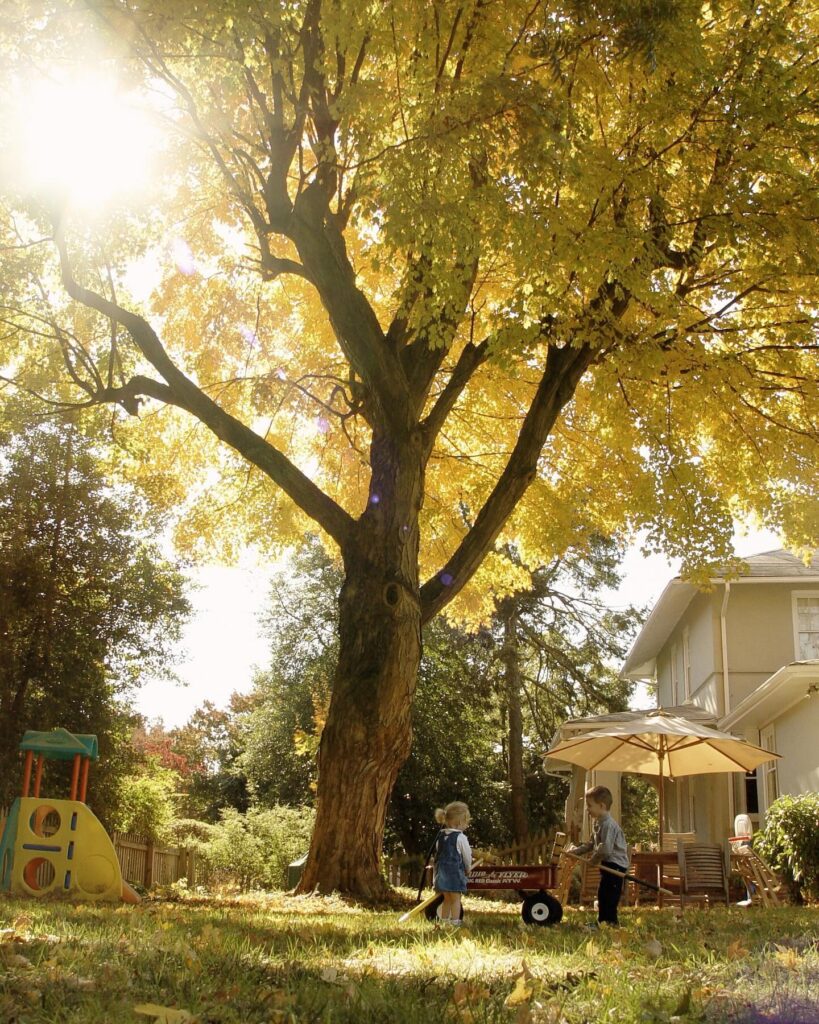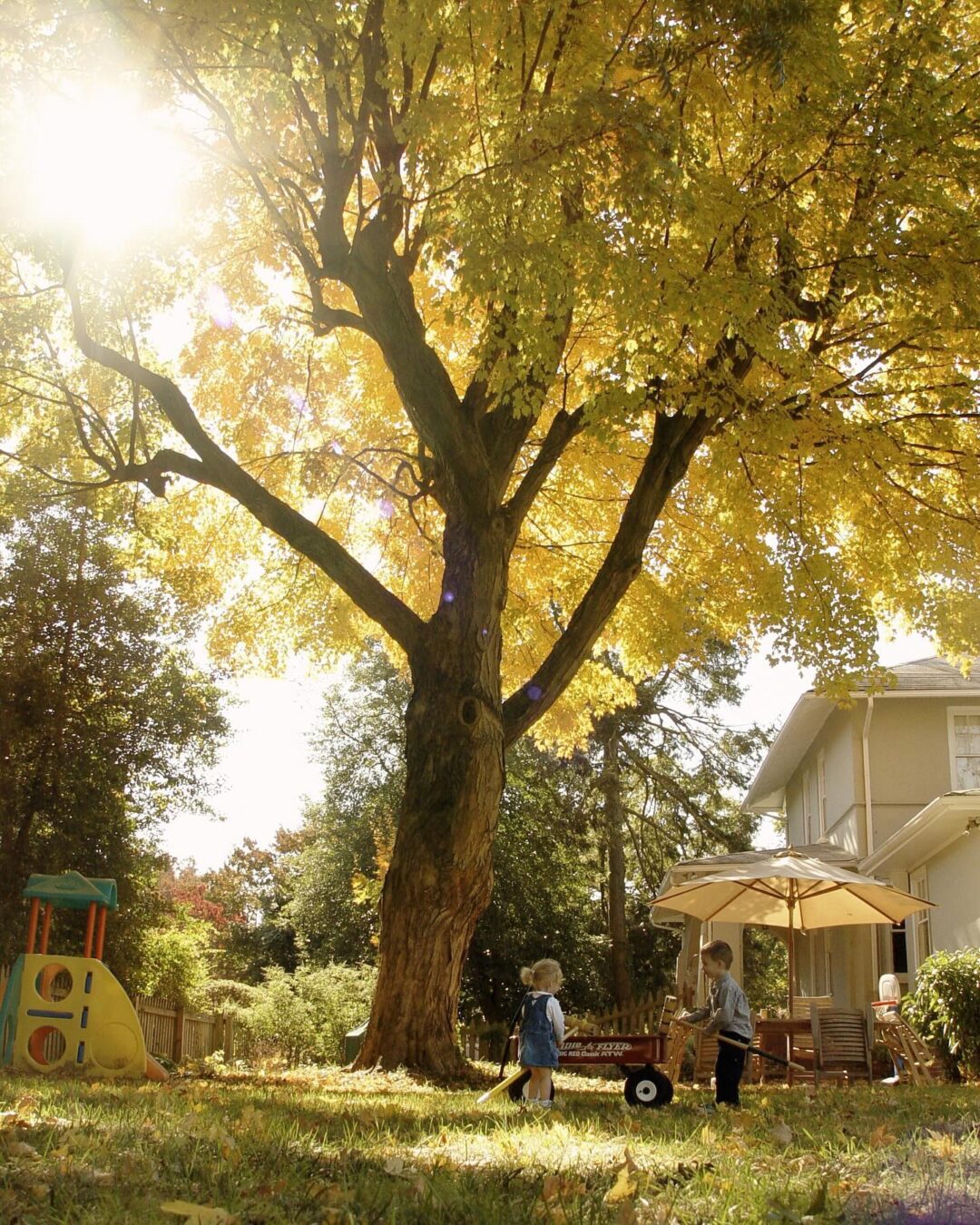I’ve always had a thing for trees. Ask me about the places I’ve lived, and eventually, I’ll tell you about a tree I loved. One tree, in particular, stood sentinel over the home where we raised our children on the northside of Richmond, Virginia. Perhaps it’s my favorite.
We welcomed the shade it provided over three-quarters of the house for three-quarters of almost every year we lived there. In autumn, it blazed a shade of yellow that I’ll struggle to describe for the rest of my days. That tree was a constant presence during a time when everything else in our lives spun in constant motion.

I remember a contractor once telling me that the tree’s canopy probably cut our electric bill in half. Our old house, with its century-old glass windows and lack of insulation, was far from energy efficient, and money was really tight back then. At the time, I was simply grateful for the way the tree’s shade eased some of the financial burden. These days, gratitude sparks more imagination. I place the tree in a circle, of innumerable angel investors, funding diapers-in-bulk, gymnastics classes, car repairs, Lego sets, rare getaways with Laura, and so much more.
So many of our children’s birthday parties took place under that tree. Candles on cakes marked another year around the sun, while tree rings recorded the passage of time. The vast majority of the first decade of sermons I preached were written and memorized beneath its branches. The pressure of weekly deadlines at the pulpit was difficult for me, an insecure writer. I suppose the sheer size and longevity of the tree helped put things into perspective.
And then there were those autumn days. The kids would disappear into gigantic piles we’d just raked together, emerging with pieces of leaves tangled in their hair. I love that tree for so many reasons.
The early diagnosis came as an afterthought from someone in passing, “Your tree looks like it’s struggling.” Soon thereafter the arborist delivered the blow, “Your tree is dead and needs to come down.” The second expert was more direct: “Take it down before it crushes your house or hurts a child.”
It took some time to absorb, and even more time to wrestle with the guilt. It took less than two hours to take down a tree that had taken 200 years to grow. Memories of it always evoke sadness and gratitude for me.
In the first half of my life, in those years we were raising our children, I would have attempted to deny or eradicate the sadness. But here’s the thing, I’m discovering the gift of embracing the hard stuff, because it appears that this is where we eventually find the best stuff.
It’s “joy coming in the morning”
It’s “Friday, but Sunday’s coming”
It’s “there’s a crack in everything, that’s where the light gets in”
It’s “inconsolable longing”
It’s “the worst thing is never the last thing”
It’s the wisdom of the every-day saints gone before us.
It’s the suffering servant walking beside us.
It’s the path to peace which, in the gift of time, transforms us into peacemakers.
The day the tree was felled, a clearing appeared in the very place the canopy once stood. I didn’t see it then. I see it now.
The rain came down, sunlight shone through, and the soil, nourished in the very place where that old tree, and the others before it, once towered over, absorbed the gift, and, in the gift of time, the seedling grew.
Lucy Maud Montgomery says, “I am sure I could not have been more than four years old when I first consciously took note of the trees that watched over me.”
Take note, friends. God watches over all of us. Yes, many of us knew it before but now, after what we’ve been through and what some are going through, we will know this gladness more fully and be grateful for it. For all of it.
May the peace of Christ be with you.
Rev. Sterling W. Severns
Pastor

